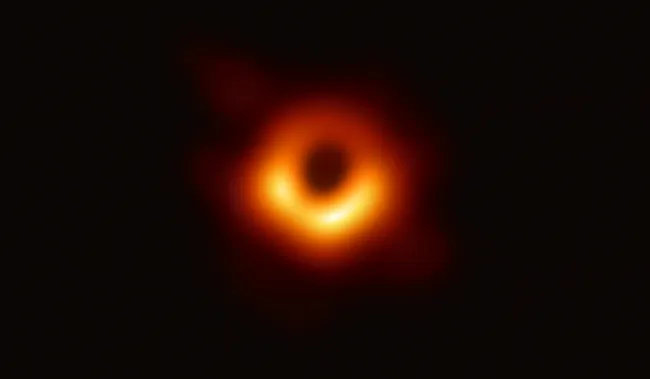
Breakthrough in Astronomy: Scientists Unveil Sharpest Ever Images of Black Holes
2025-05-31
Author: Jacob
A New Era in Black Hole Observation
In an extraordinary advancement in astrophysics, scientists utilizing the Event Horizon Telescope (EHT) have successfully captured the clearest images ever of distant black holes. By leveraging cutting-edge technology and observing at a remarkable frequency of 345 GHz, researchers have gazed deeper into the cosmic abyss surrounding these mysterious giants.
Revolutionary Imaging Techniques
This remarkable achievement is made possible through a sophisticated method known as very long baseline interferometry (VLBI). By intertwining signals from an array of telescopes scattered across the globe, scientists have effectively constructed a virtual instrument as expansive as our planet—a feat that delivers astonishing detail and clarity.
Sharper Focus, Greater Insights
For the first time, the team detected signals at 345 GHz, a significant leap from their previous work at 230 GHz. This transition allows for an impressive angular resolution of approximately 14 microarcseconds—almost 50% sharper than earlier attempts. This clarity provides scientists with an unprecedented view of how light bends near the immense gravity of supermassive black holes.
Unlocking the Mysteries of M87 and Sagittarius A*
Among the spotlighted black holes are those in the famous M87 galaxy and Sagittarius A*, nestled in the heart of our own Milky Way. With these sharper images, researchers are eager to uncover intricate details about the swirling gases, formidable gravitational forces, and intense magnetic fields that shape their environments.
Setting the Stage for New Discoveries
Back in 2019, the same global network achieved the first direct image of a black hole, yet details were limited. Now, with higher frequency data paving the way, scientists are poised to disentangle the various forces at play within these cosmic phenomena.
Technological Challenges Overcome
However, reaching this high level of detail at 345 GHz presented unique hurdles. The atmospheric absorption of radio waves intensified at this frequency, making it necessary for the EHT collaboration to enhance its bandwidth to capture a broader range of the cosmic radio spectrum. Researchers also had to wait for optimal weather conditions at each telescope site, strategically located at high altitudes to mitigate atmospheric distortion.
Pioneering Polarized Light Observations
This innovation not only leads to sharper images but also sheds light on the polarized light surrounding black holes. The phenomena governing the orientation of light—Faraday rotation—becomes less significant at higher frequencies, granting researchers a clearer view of magnetic fields around black holes.
Towards Real-Time Imagery and Time-Lapse Films
Additionally, this technological leap sets the groundwork for crafting time-lapse ‘movies’ of black hole environments. With Sagittarius A* evolving approximately every 200 seconds, simultaneous observations could soon yield real-time imaging of materials swirling around its event horizon.
Future Prospects with ngEHT
The next-generation EHT (ngEHT) project aims to broaden the network of telescopes, enabling observations at multiple frequencies and collecting tenfold more high-quality data. This expansion will allow scientists not only to improve detail but also to study other active galactic nuclei jets more precisely, unraveling the intricacies of their formation and behavior.
A Milestone in Astrophysical Research
This monumental achievement symbolizes more than just technological progress; it represents the collective perseverance and collaborative efforts of the EHT team. By overcoming the challenges of high-frequency observation, the EHT is redefining the landscape of astrophysical study.
The Journey Ahead
As noted by Lisa Kewley, Director of the Center for Astrophysics, this success is a profound milestone. The clarity achieved in imaging black holes is not only groundbreaking but sets a new standard in the realm of astrophysical research. With this 345 GHz imaging capability, a new chapter in exploring the universe’s cosmic giants is about to unfold, promising extraordinary insights into the very fabric of our universe.









 Brasil (PT)
Brasil (PT)
 Canada (EN)
Canada (EN)
 Chile (ES)
Chile (ES)
 Česko (CS)
Česko (CS)
 대한민국 (KO)
대한민국 (KO)
 España (ES)
España (ES)
 France (FR)
France (FR)
 Hong Kong (EN)
Hong Kong (EN)
 Italia (IT)
Italia (IT)
 日本 (JA)
日本 (JA)
 Magyarország (HU)
Magyarország (HU)
 Norge (NO)
Norge (NO)
 Polska (PL)
Polska (PL)
 Schweiz (DE)
Schweiz (DE)
 Singapore (EN)
Singapore (EN)
 Sverige (SV)
Sverige (SV)
 Suomi (FI)
Suomi (FI)
 Türkiye (TR)
Türkiye (TR)
 الإمارات العربية المتحدة (AR)
الإمارات العربية المتحدة (AR)